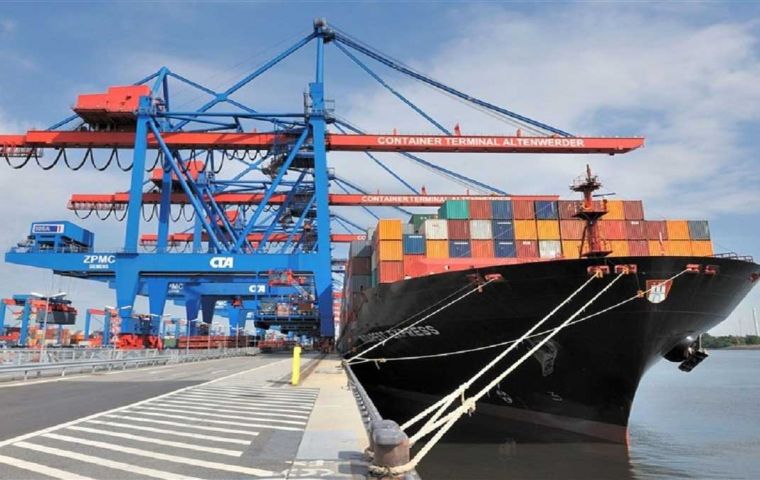MercoPress. South Atlantic News Agency
Argentina records foreign trade surplus in 2024
 An Indec report showed that achievement for the first time in two decades
An Indec report showed that achievement for the first time in two decades Argentina posted last year its highest nominal trade surplus in two decades, according to a National Institute of Statistics and Census (Indec) report released Monday in Buenos Aires. The document showed a US$ 18.9 billion positive outcome which contrasted with the US$ 6.925 billion deficit the year before.
In December of 2024 alone, Argentine exports reached US$ 7.035 billion, while imports totaled US$ 5.369 billion for a US$ 1.666 billion surplus, thus becoming the 13th month in a row with a favorable outcome following the peso devaluation in December 2023.
Sales abroad went up 20% in 2024 driven by agricultural and industrial manufactured goods which accounted for 37.2% and 27.7% of the total, respectively. Primary products ranked third at 23%, followed by fuels and energy at 12.1%. The main exported products included soybean meal and pellets (13.2%), corn grain (8.9%), and crude petroleum and soybean oils (6.9% each).
Brazil remained the main destination, with 17.1% of the total shipments, followed by the United States (8.1%) and Chile (7.9%).
On the other hand, imports went down 17.5% from 2023. Intermediate goods, parts and accessories, and capital goods accounted for 76% of purchases, chiefly from Brazil (23.6%), China (19.2%), and the United States (10.2%).
The Indec report also mentioned that a fall in international prices was detrimental to Argentina, leading to losses worth about US$ 1.55 billion after 5.8% drops when it came down to products sold abroad and only 4% in items purchased.
At any rate, the historical trade balance underscored the country's capacity to boost its exports, while controlling its imports, even in an adverse international context, it was explained.




Top Comments
Disclaimer & comment rulesCommenting for this story is now closed.
If you have a Facebook account, become a fan and comment on our Facebook Page!